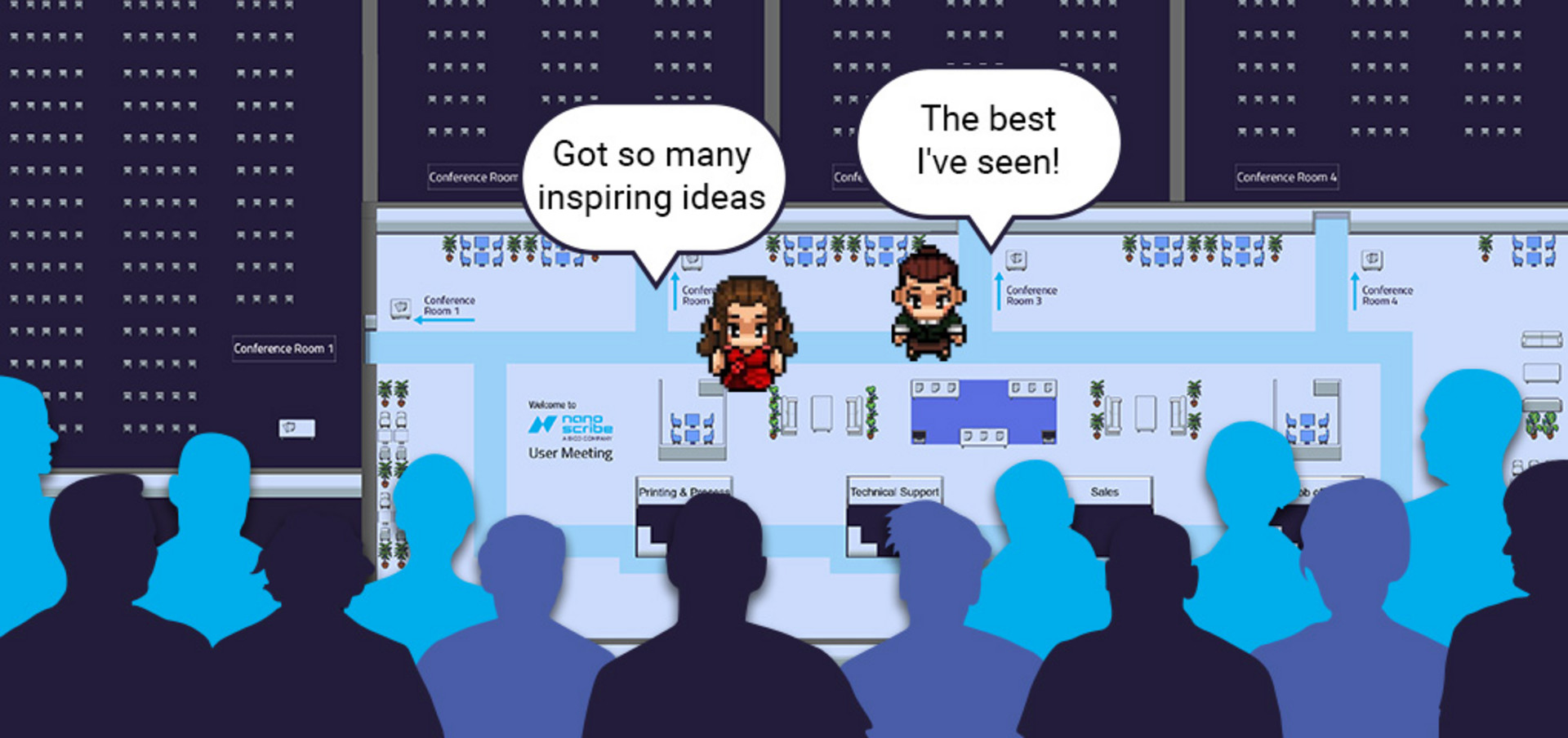Yesterday, more than 60 Nanoscribe system users met in gather.town to network and share their knowledge on the realization of applications in various fields such as life sciences, microoptics, microfluidics, microrobots and integrated photonics. In his keynote presentation on micropatterned adhesives, Dr. René Hensel from the Leibniz INM – Institute for New Materials in Saarbrücken (Germany) outlined the key benefits of Nanoscribe’s microfabrication technology based on Two-Photon Polymerization (2PP) for rapid prototyping in material engineering. The total of 15 presentations of Nanoscribe customers and system users demonstrate the microfabrication technology’s versatility and we highlight some of them briefly in the following sections.
Exploiting 3D design freedom of 2PP-based microfabrication
In microfluidics research, it is common to combine different fabrication approaches in the rapid prototyping of microfluidic devices and chips. There have been significant advances in the in-chip printing of three-dimensional structures into pre-manufactured microchannels, presented by research teams from RWTH University of Aachen and the University of Bremen.
Life science research is being driven by the ability to 3D print scaffolds that mimic shape and size of human cells to advance cell culturing and tissue engineering. Research teams from Technical University of Kopenhagen (DTU) and Forschungszentrum Jülich presented their achievements and also put emphasis on the importance of photoresins such as IP-L 780 and Nanoscribe’s new flexible printing material IP-PDMS.
3D printing couplers and waveguides for photonics packaging solutions
In microoptics and photonics research, solutions such as tapered fibers and low-loss waveguides for fiber-to-fiber and fiber-to-chip connections were presented by researchers from Vrije Universiteit Brussels. A team from King Abdullah University of Science and Technology 3D-printed ultra-compact single-fiber optical tweezers for the realization of integrated micro-optical systems.
The photonic integration research is about interfacing challenges. Nanoscribe’s microfabrication technology is driving hybrid interfacing methods for integrated nanophotonic circuitry as shown by researchers from the University of Münster (WWU). At the Massachusetts Institute of Technology (MIT), scientists are using Nanoscribe’s 2PP technology to fabricate optical free-form couplers for high-density integrated photonics.
Insights into the everyday experiences of users
In a workshop session, Nanoscribe users shared their experiences of tackling challenging manufacturing tasks in order to learn from and with each other. A wide variety of aspects were covered. For example, the attendees talked about challenges during the printing process such as stitching lines of objects that exceed one print field and how to avoid them with smart printing strategies. They also lively discussed how to optimize post-print development processes for arrays of high aspect-ratio microstructures. A lot of valuable insights, tips and approaches came from the Nanoscribe service team and from the Nanoscribe community itself so that solutions for all the mentioned challenges in day-to-day work could be outlined.
Thanks to exciting presentations paired with various opportunities for networking and exchange of experiences, it was a day full of new ideas and practical tips for own projects. In a relaxed atmosphere, one Nanoscribe user posted into the chat: “Fun fact: Nanoscribe’s PPGT+ works very well under earthquakes with MAG 7.1” and another attendee summed up the meeting with the following words: “I'm excited for this conference, the quality and effort put into the design is the best I've seen!”
More insights into Nanoscribe’s microfabrication expertise
Learn more about our microfabrication technologies and application opportunities in our premium resources. Alongside on-demand webinars, in our premium resources section we offer you whitepapers on Two-Photon Polymerization (2PP) and Two-Photon Grayscale Lithography (2GL ®), exclusive data and fact sheets for Nanoscribe printers and photoresins. Moreover, via a keyword-underpinned database you find hundreds of scientific publications of our customers in your specific application area.


